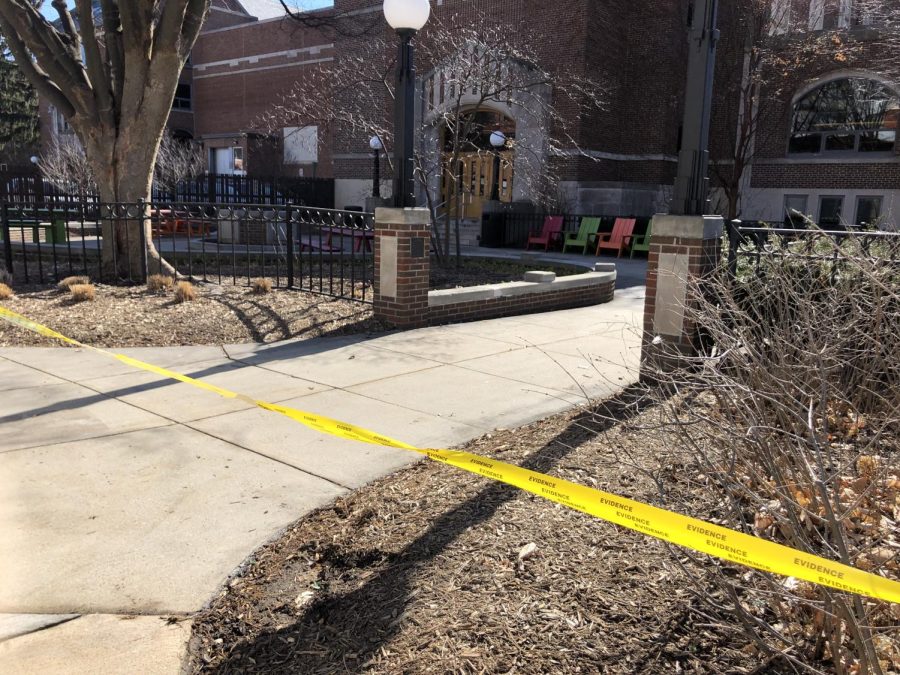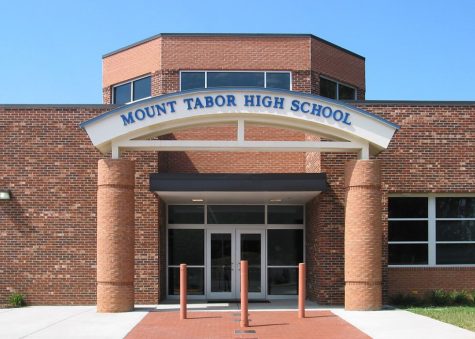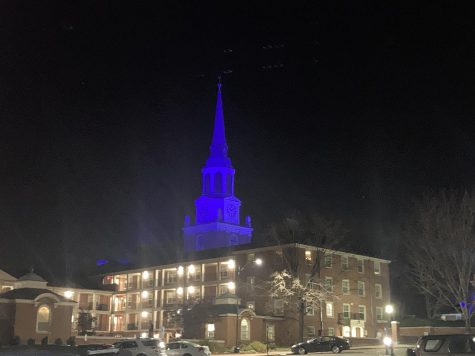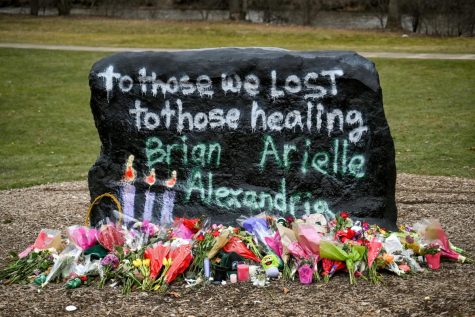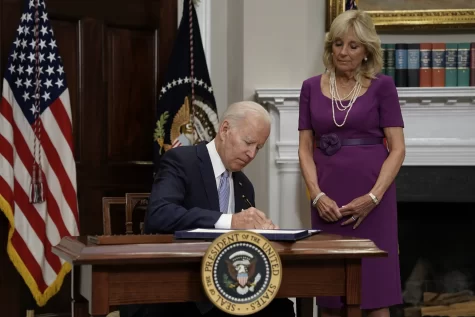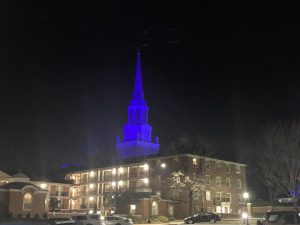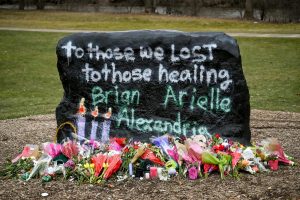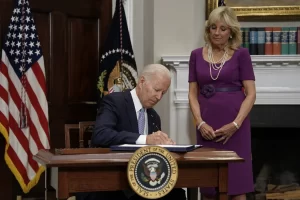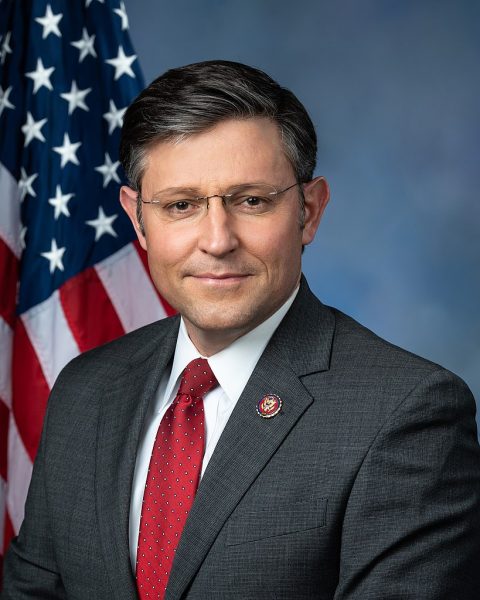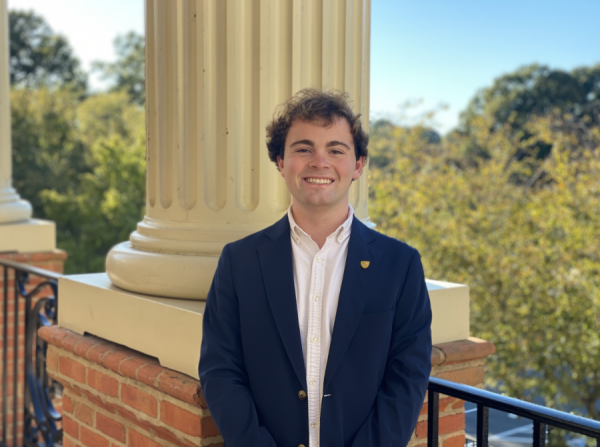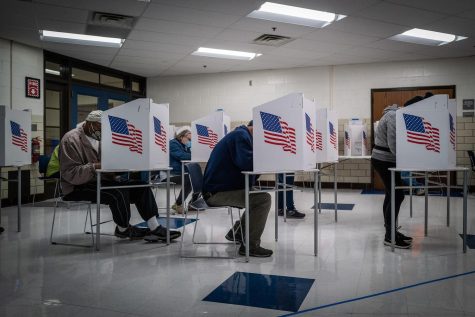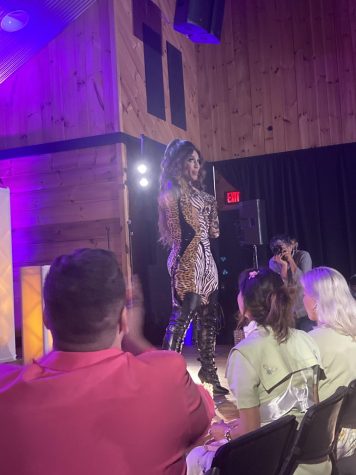The college experience no one asked for
Michigan State is the most recent in a long line of shootings on college campuses
Yellow caution tape blocks off the scene of a shooting at Michigan State University.
March 2, 2023
In the United States, the “college experience” has emerged as an umbrella term that encapsulates a distinct set of rite-of-passage undergraduate experiences. At many U.S. universities, these experiences include sharing meals with your friends at the campus dining hall, celebrating the victories of your university sports team and turning your tassel at graduation as a last symbolic conclusion to your degree.
It’s an experience that many, including myself, have come to glorify. The U.S. college experience is unique in its identity of a community. For a brief four-year window, students assume residency on a campus crowded with thousands of other individuals of the same age. The avenues for community connections are endless.
However, in the last few decades, many students have had the coveted “college experience” tainted.
Grief and trauma have clouded collegiate life as gun violence pervades campuses in recurring devastating incidents. The glorified community of campus life has been shaken by gun violence time and time again at colleges across the country.
This culture of gun violence that our generation has come to recognize as an inevitable reality is unacceptable.
Most recently, gun violence rattled Michigan State University when a gunman killed three students and injured five others last Monday, Feb. 13.
Before that, it was the University of Virginia, where a gunman shot and killed three student-athletes on the university football team last November.
And the timeline recedes further still, with incidences of gun violence spanning time zones across the U.S., and a death toll exhausting itself in number. Headlines reported 10 dead at Umpqua Community College in 2015, seven dead at Oikos University in 2012 and 16 dead in an incident as far back as 1966 at the University of Texas at Austin. The largest mass shooting on a college campus took place in 2007 in Blacksburg, Va., when a gunman shot and killed 33 people at Virginia Tech. Then, not even five years later, Virginia Tech witnessed two more fatalities in another incidence of gun violence when a gunman shot and killed two men on campus in 2011.
And that laundry list of lives lost is only accounting for college campuses.
If we expand our geographic lens beyond universities, the death toll of gun violence inflates itself further still. According to reporting from the Gun Violence Archive, a non-profit organization that tracks gun violence in the U.S., there have been 67 mass shootings in the past year alone in the U.S. That means 67 incidents in which four or more people were killed or injured by an active shooter.
For Generation Z, this violence has pervaded their childhood and education. In the post-Columbine culture in which current college students grew up, schools have never been synonymous with spaces of safety. Current curriculums include active shooter drills, metal detectors have established themselves as commonplace in some schools and people in positions of power have disguised clear backpacks as solutions.
Together, we have grieved the lives of each school shooting and mourned the empty promises of legislative reform that follow. School names like Columbine, Sandy Hook and Marjorie Stoneman Douglas have come to symbolize the collective trauma of an entire generation.
For some students at Michigan State, the shooting Monday marked their second experience with gun violence. Several students on campus had lived through other mass shootings, including the Sandy Hook Elementary school shooting in 2012 and a shooting at Oxford High School in Michigan in 2021.
Although gun violence has suffused U.S. culture into an accepted frequency, hope for remediation lies in legislative intervention.
Confronting gun violence in its entirety requires a comprehensive approach that addresses both legislative shortcomings as well as the mental health crisis facing our nation. While the latter is a multifaceted problem that may take years to adequately address, legislative action has the potential to save lives now.
Legislation that requires comprehensive background checks and waiting periods for firearm sales is the first step toward reducing gun violence.
The Prevention Institute (PI), a national nonprofit that advocates for health equity, published a summary of recommendations to prevent gun violence. In the list, PI also suggests banning firearms and high-capacity magazines, limiting youth access to guns and establishing adequate oversight of the marketing and sale of firearms.
In the wake of the MSU shooting, many are left wondering what the tipping point will be for a legislative response addressing gun control. The question then arises of when congressmen and others in positions of power will trade their “thoughts and prayers” for real, legislative action to minimize bloodshed from gun violence and reinstate safety in our schools and campuses.


